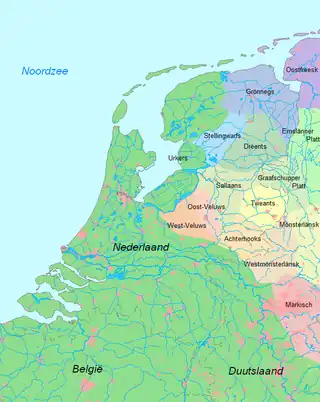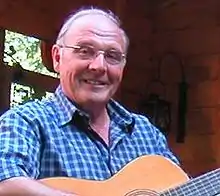Veluws dialect
Veluws is a Westphalian dialect which is spoken on the Veluwe, in the northwest of Gelderland, in central Netherlands. The language was recognized by the government of the Netherlands in 1996 (as part of Low Saxon).[1]
| Veluws | |
|---|---|
| Veluws | |
| Native to | Netherlands |
Native speakers | 175,000 (2009)[1] |
| Official status | |
Official language in | Netherlands Recognized in 1996 (as being part of Low Saxon).[1] |
| Language codes | |
| ISO 639-3 | vel |
| Glottolog | velu1238 |
 Geographical location of Veluws (colour: light green) among the other minority and regional languages and dialects of the Benelux countries | |
Dialects

Veluws is usually divided into two main dialects, West-Veluws and Oost-Veluws (East Veluws), these two dialects are reasonably similar but differ in grammar. For example: in Oost-Veluws it is said ie warkt/wärkt ('you are working') and in West-Veluws jie warken/waarken ('you are working').
West-Veluws has more influenced from Dutch. Typically the closer one gets to the border with Oost-Veluws, the more the dialects differ from Standard Dutch. For example, in the central part where West-Veluws is spoken hie staot ('he is standing'); in the northwestern part the corresponding phrase sounds hij steet, compared to hij/hee stiet in Oost-Veluws. The latter has more Low Saxon influence. In Hattem, the northeastern part where Oost-Veluws is spoken, it has more Sallandic influences.
See also
References
- Veluws at Ethnologue (25th ed., 2022)
